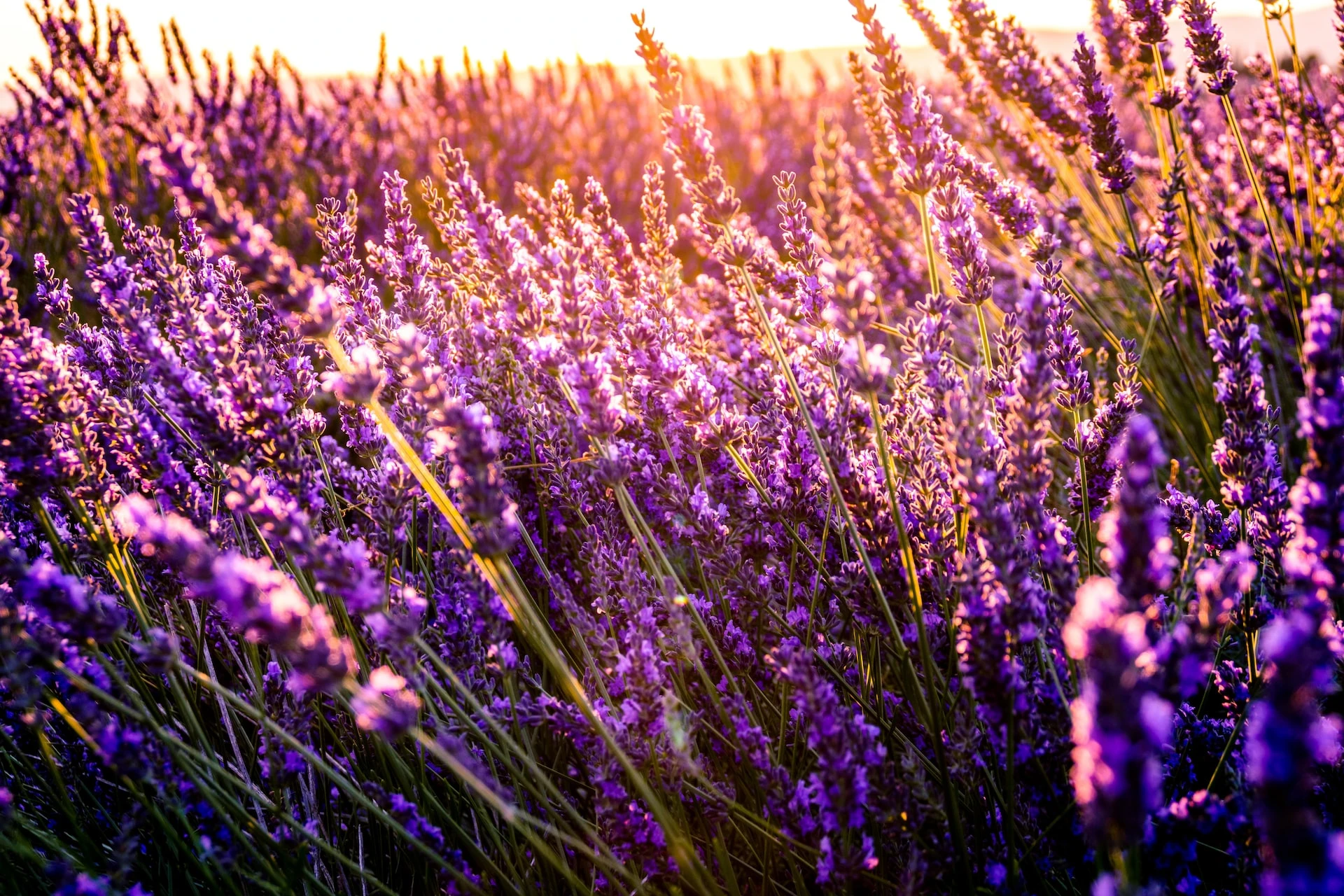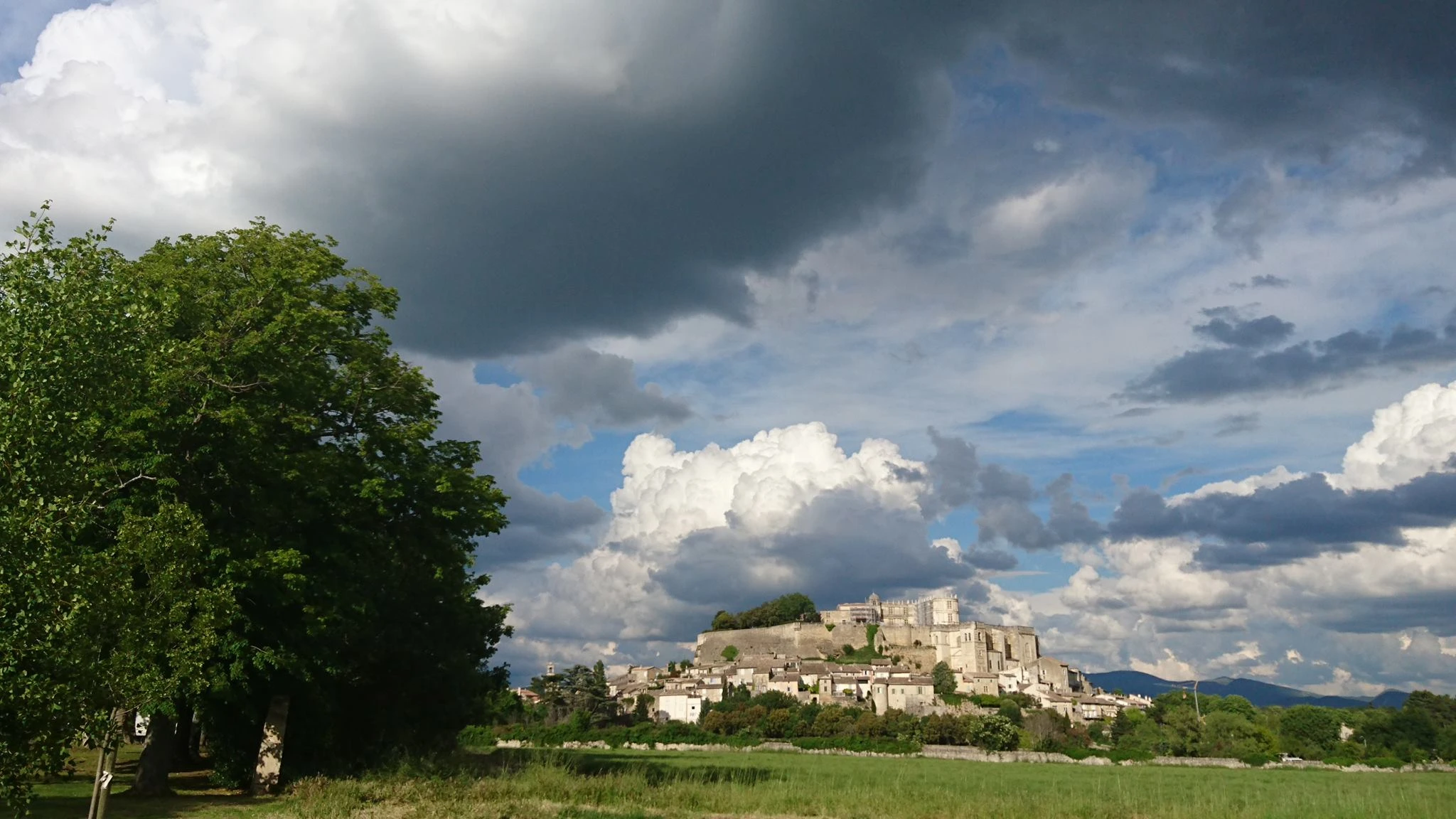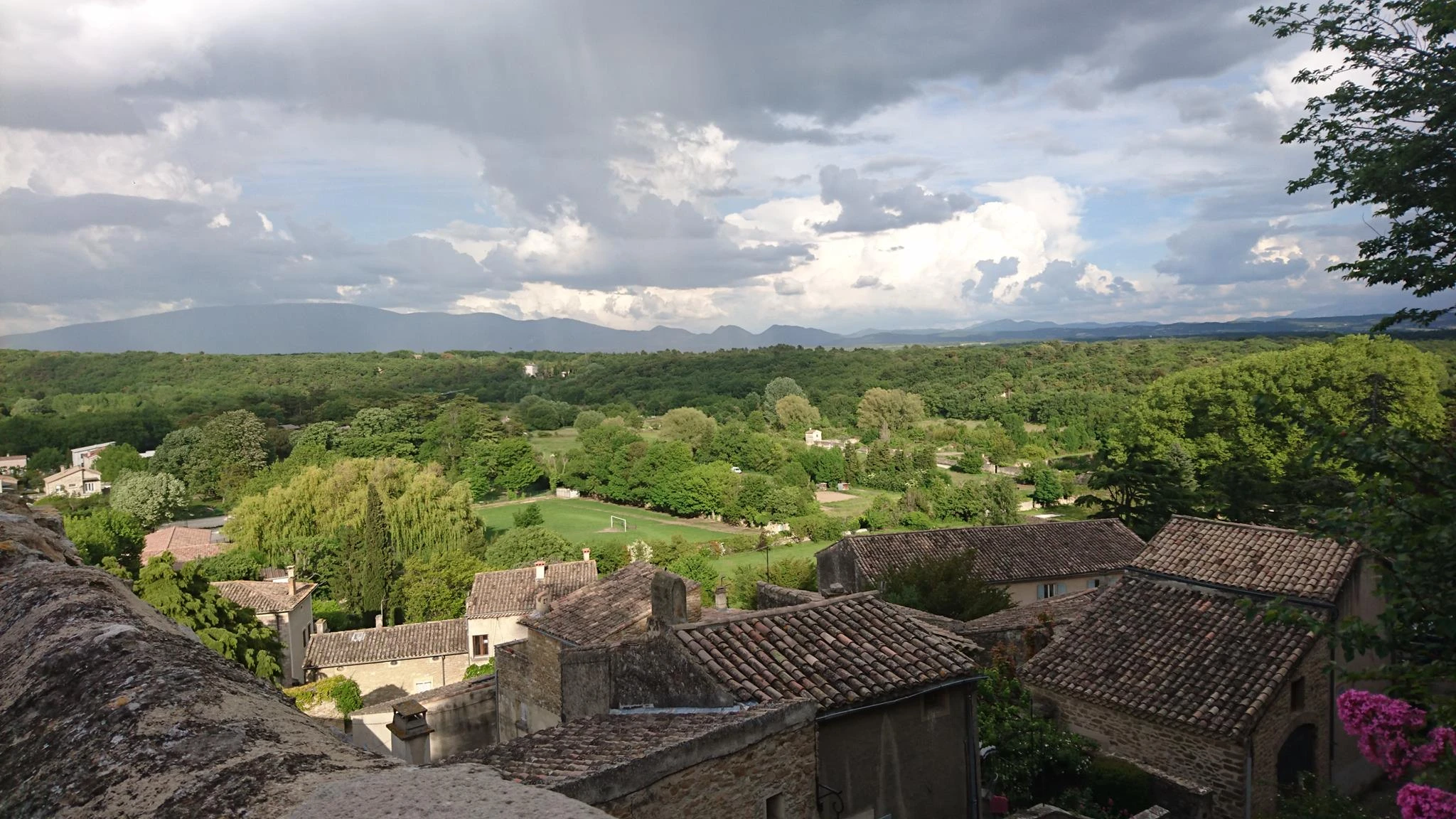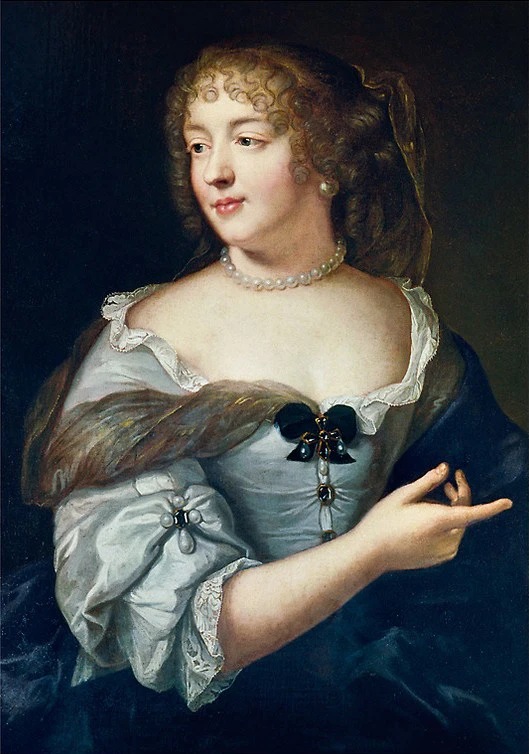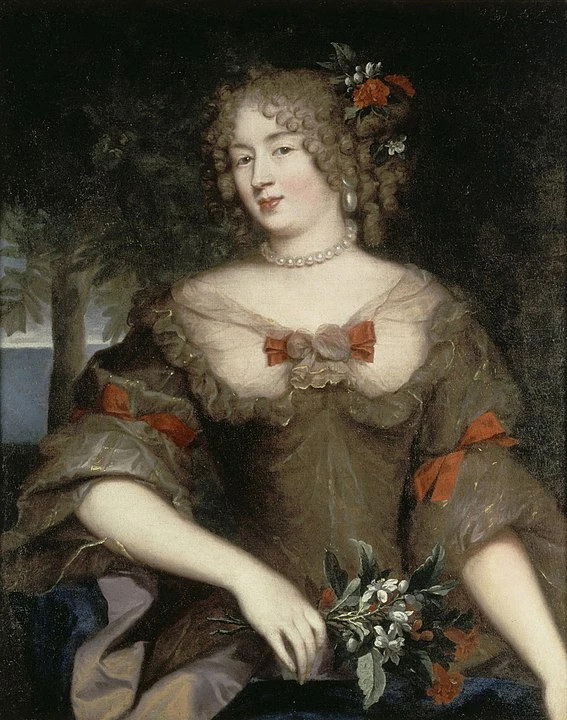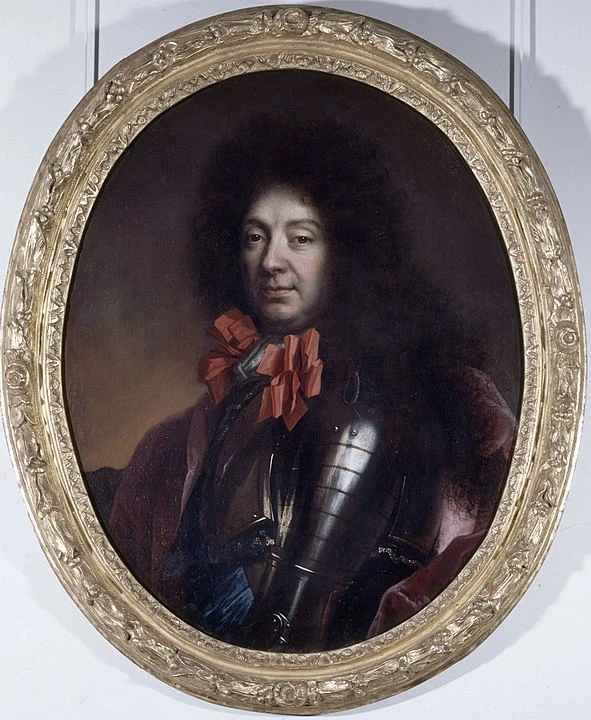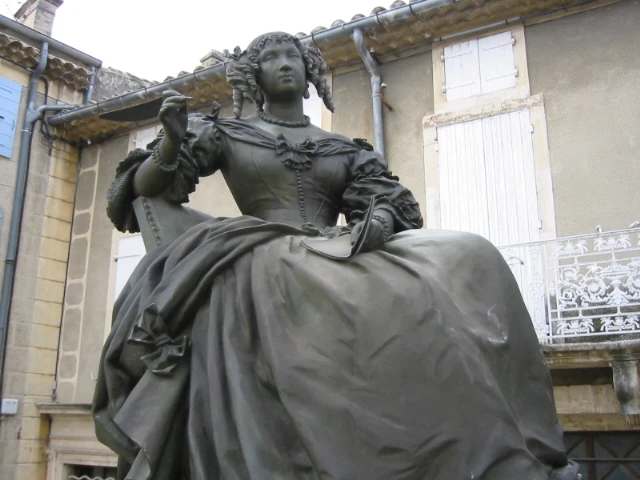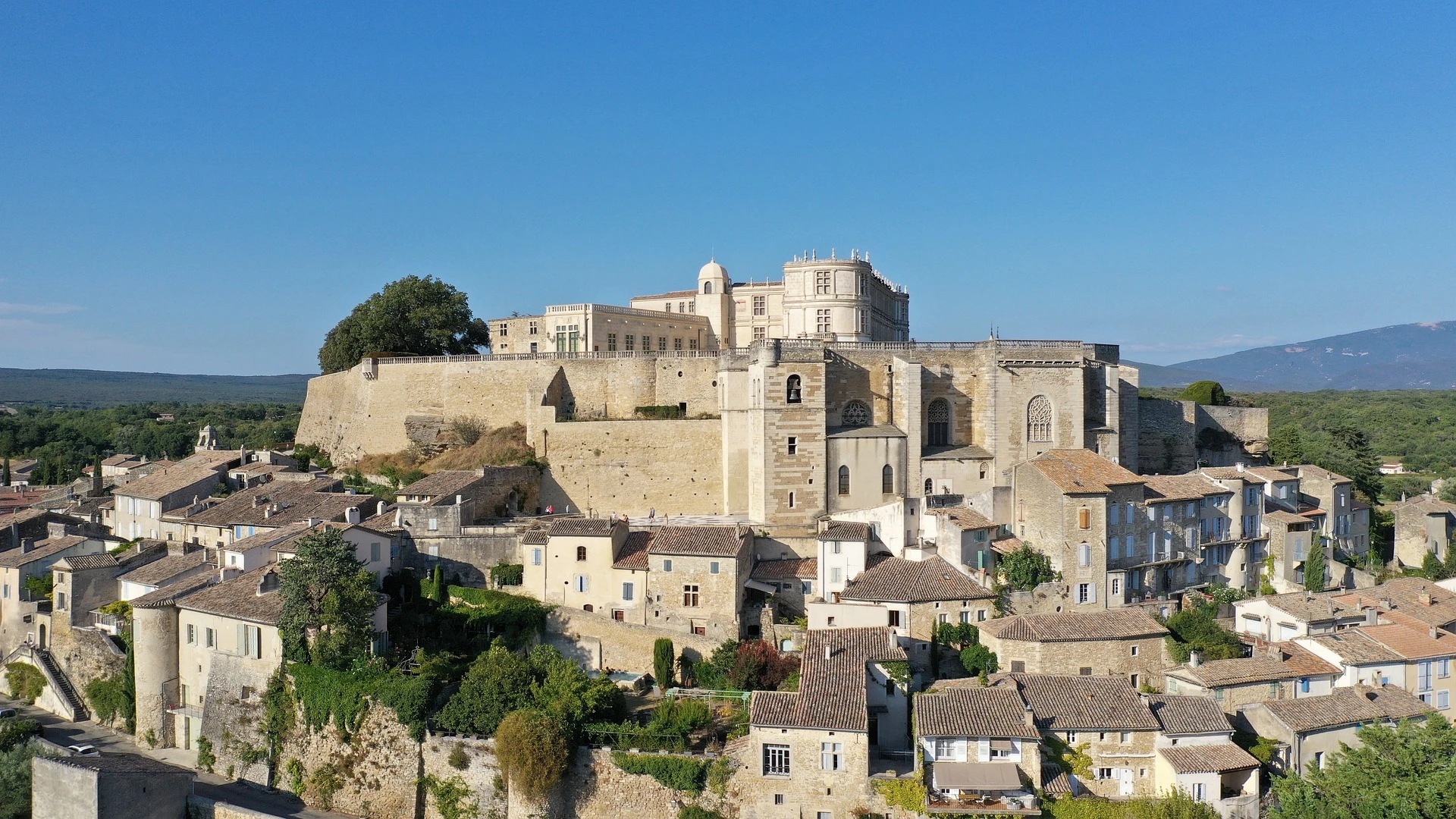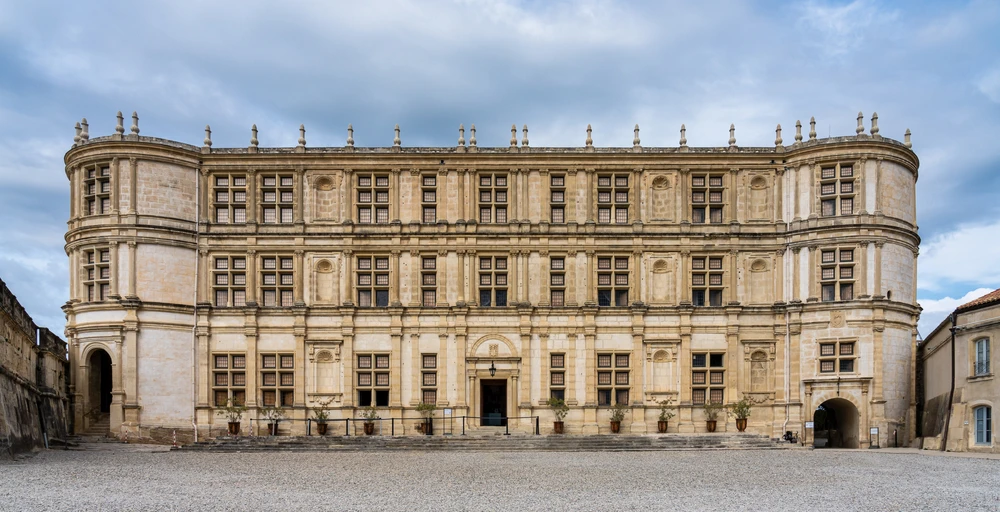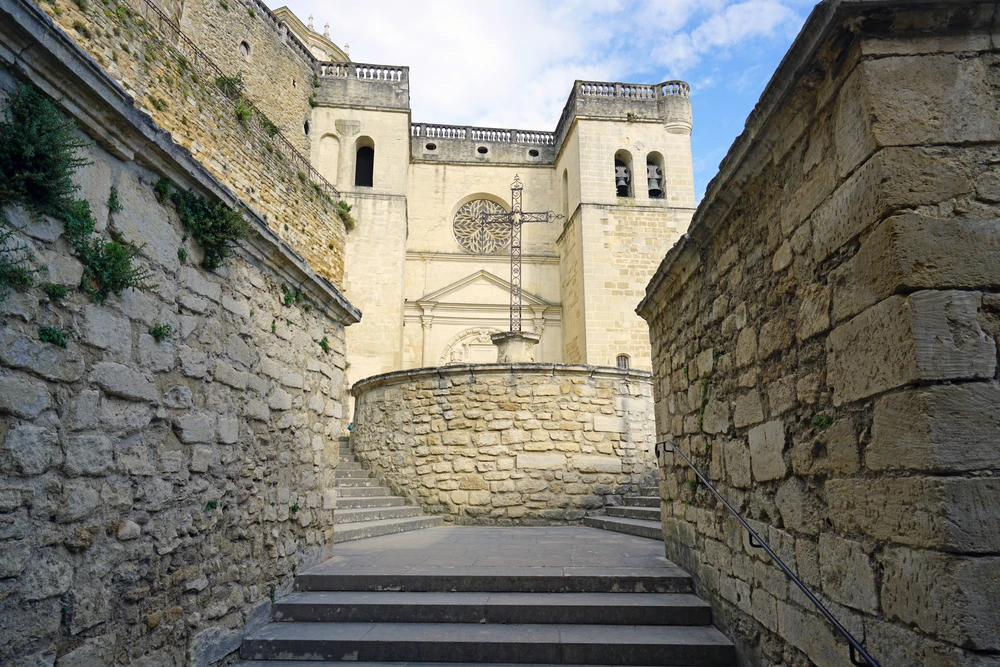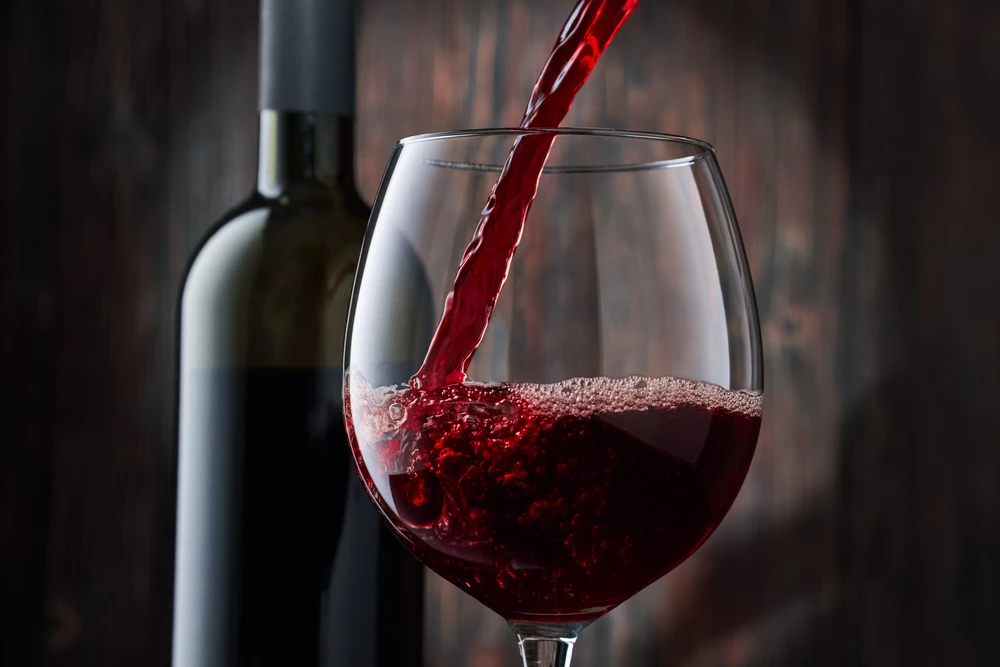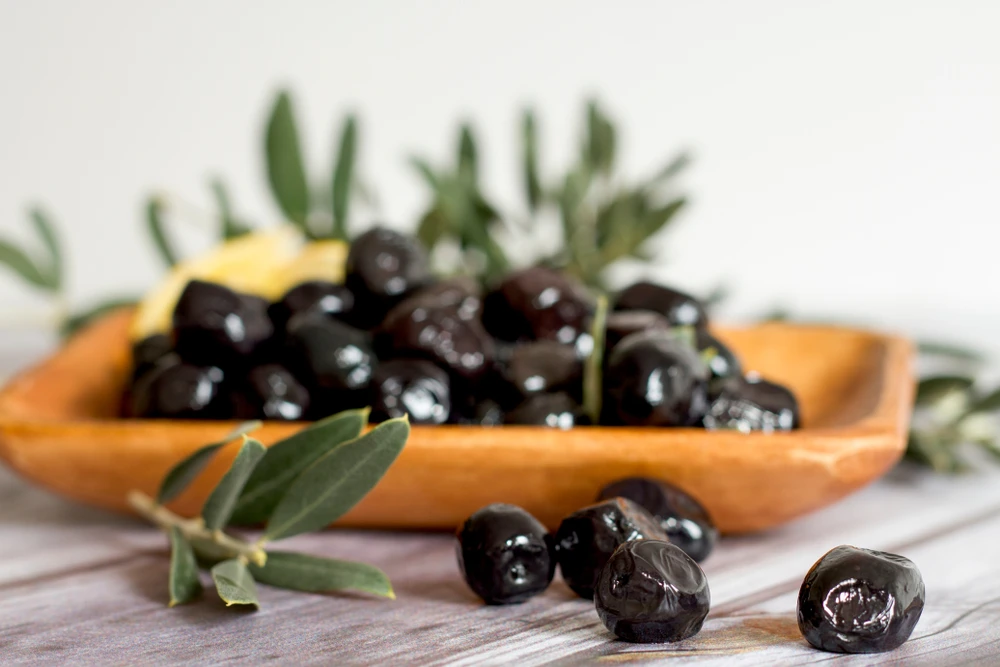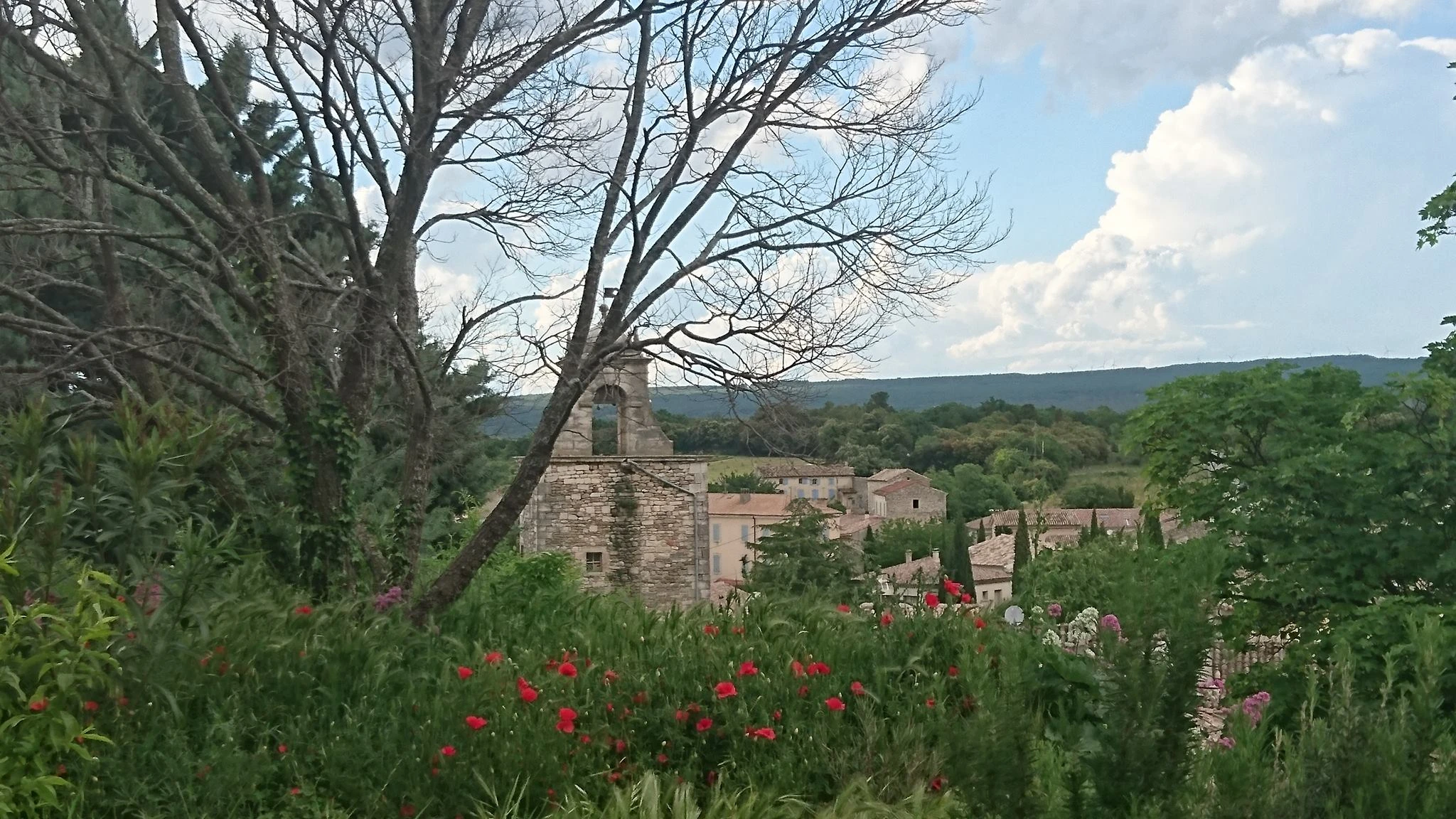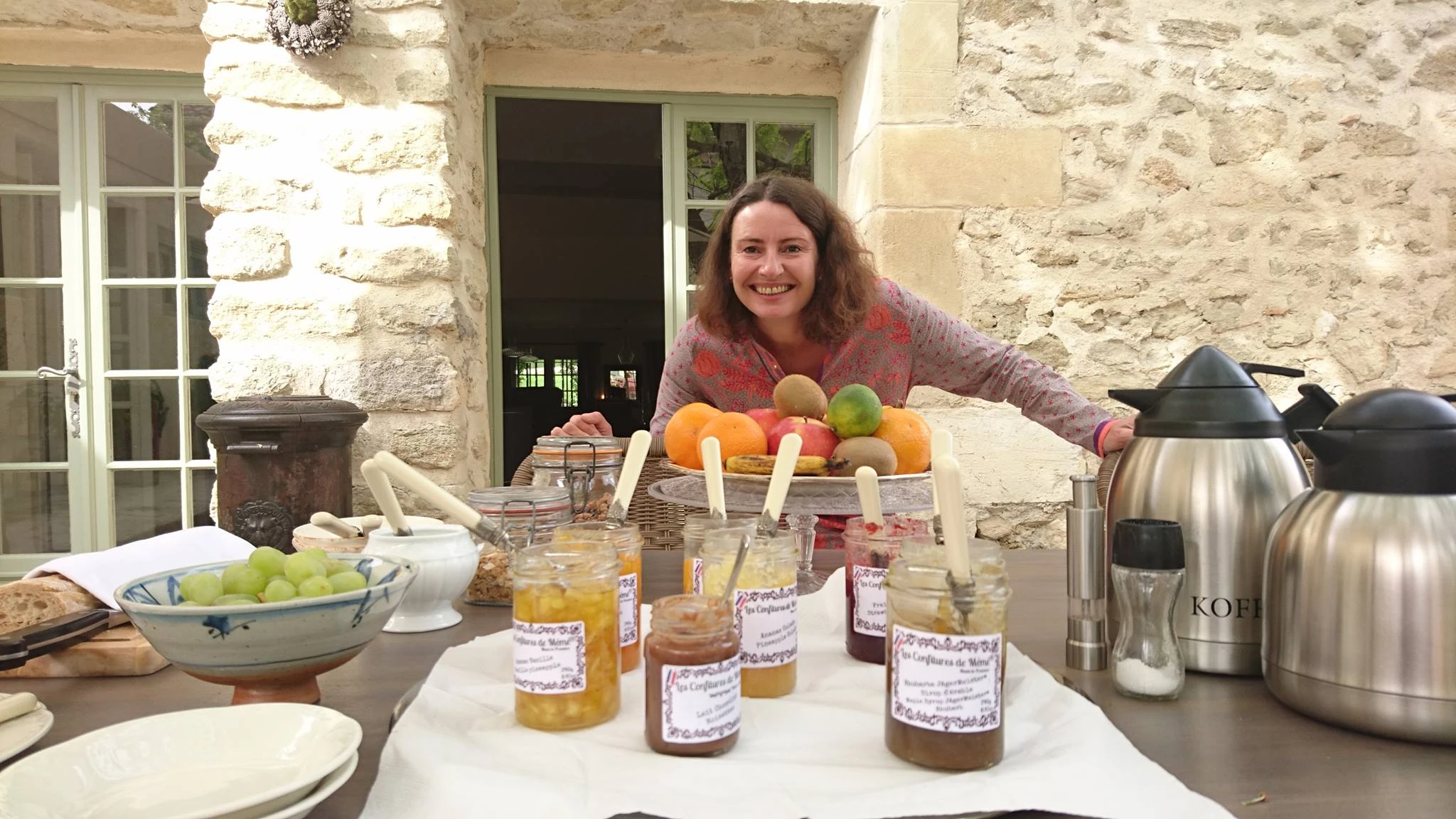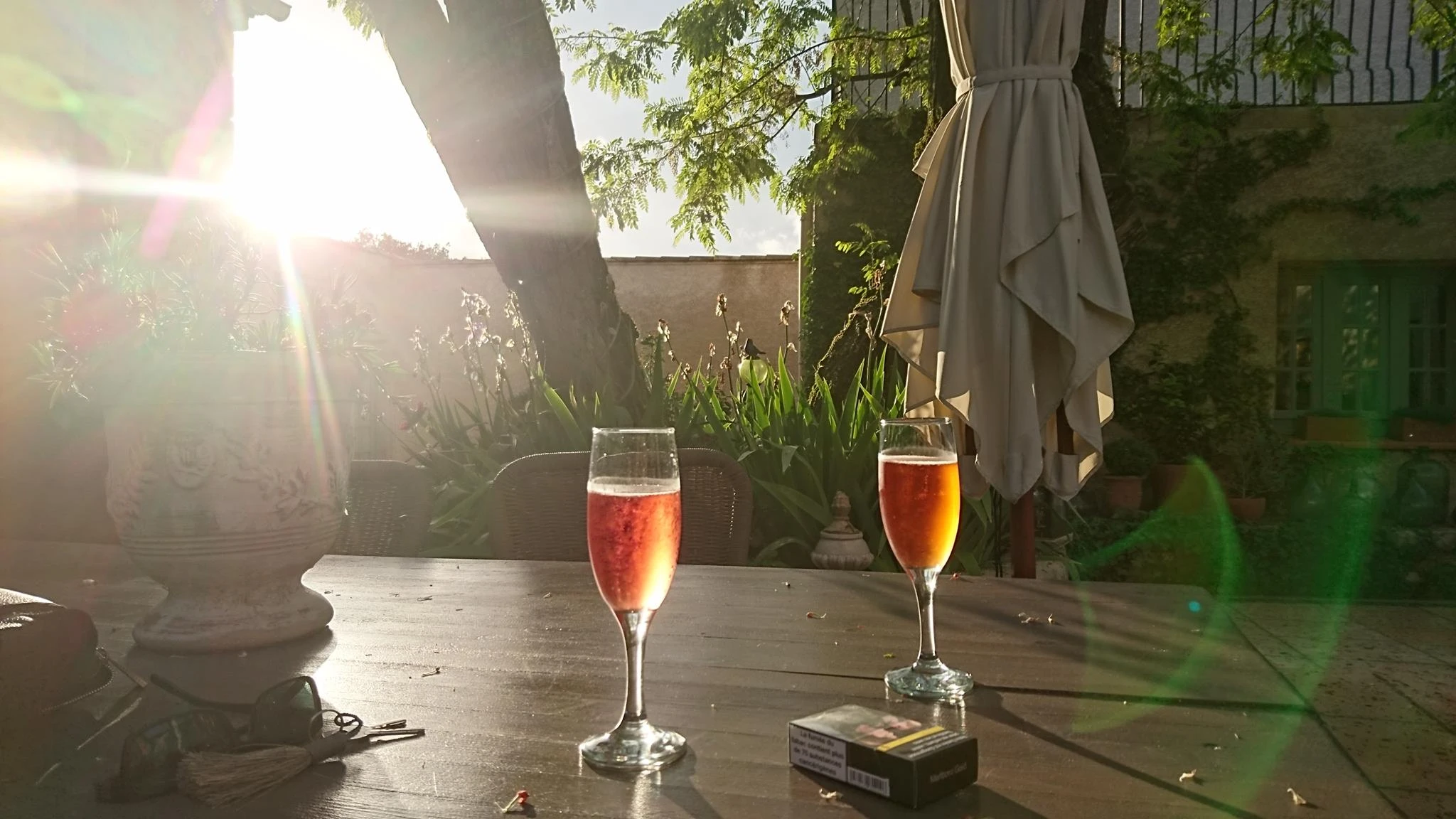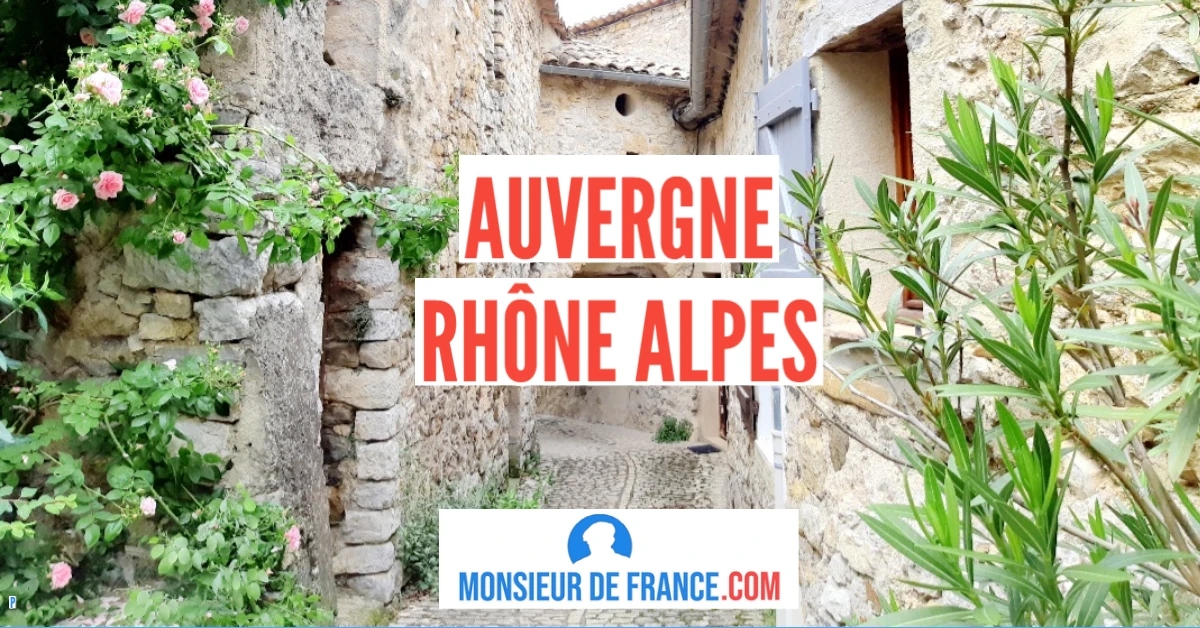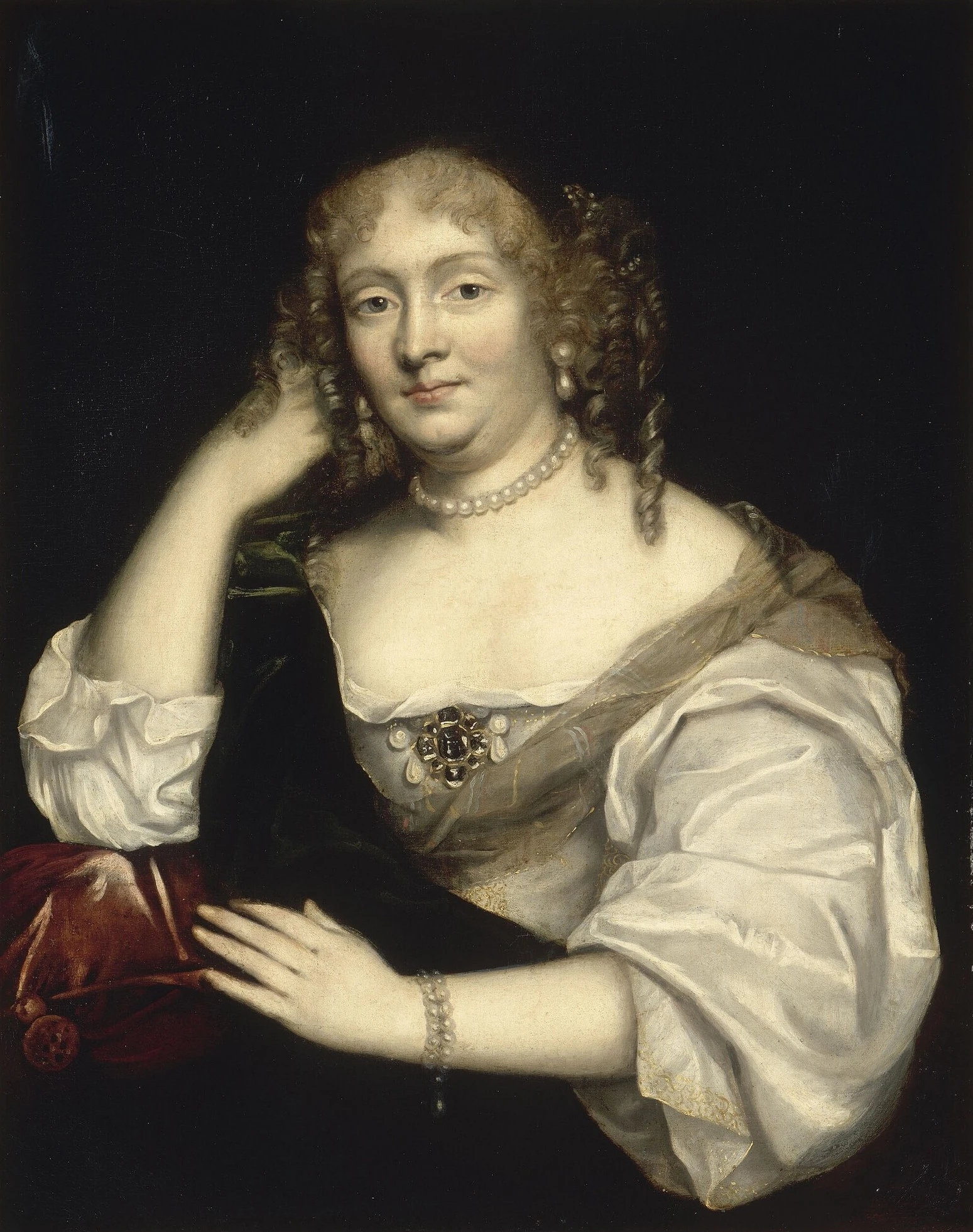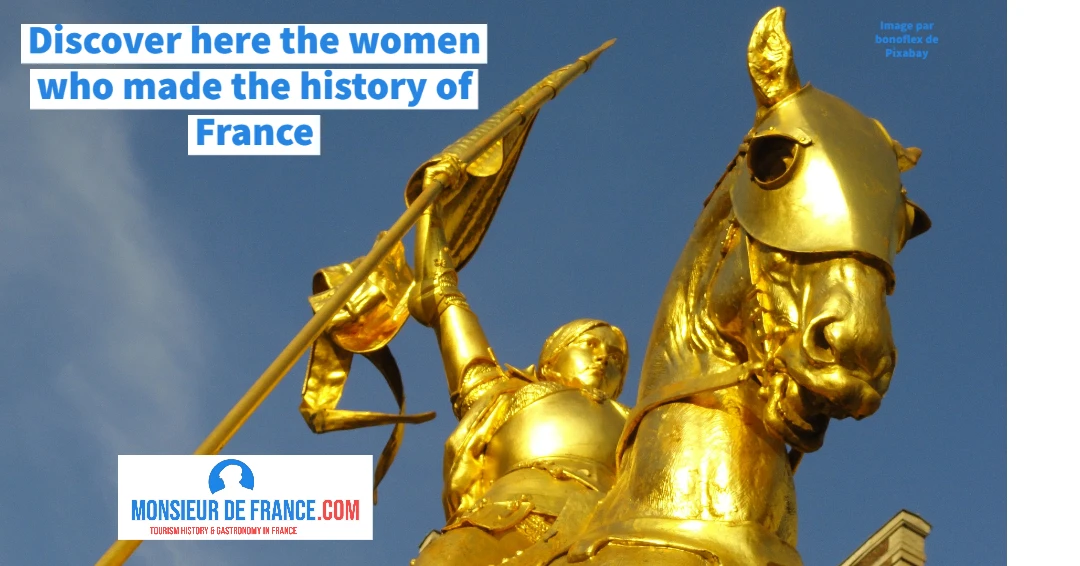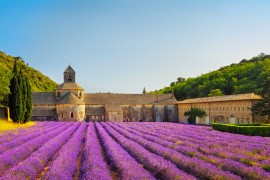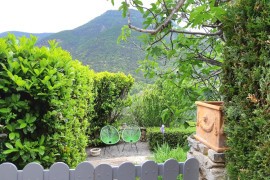Where's Grignan?
The blue of a river of lavender beats down on the rock of Grignan under the mild sun as summer begins in the South of France. Grignan, in Drôme provençale. A name that reminds us that here lies an enclave of Provence in the land of the Dauphiné, not so far from the Massif Central. A promise of Provence. And it's a promise kept, because here you'll find everything you need to enjoy life in the merry south. It's all here. The sun, the colors, the smells... Grignan has 1,500 inhabitants, which isn't very many, is it? So I'm not sure you get the picture. Let me tell you what I saw;
Grignan: Photo by JFFotografie/Shutterstock
A sort of island in an ocean of lavender
It's a city like a pyramid. It looks like it was born in the imagination of a Charles Perrault fairy tale or a good Disney. At the very top, the city is crowned by one of the most beautiful castles in France. A castle is an understatement. More like a palace. The"Versailles of the south"is its nickname, and it's suspended squarely in the sky above olive groves and vineyards. To get there, do as I do - and believe me, I'm no sportsman. You leave the car at the bottom. And you climb the city by calf powerrather than by shifting gears. It's a real pleasure to take one's time to move forward, discover this or that house and even get lost in a veritable maze all the way to the knitwear gate and finally to the castle.
Photo by Léonard Cotte on Unsplash
The Marquise de Sévigné and her letters
In the late 17th century, the courrier de Paris made this journey hundreds of times before you, to deliver the letters of the Marquise de Sévigné. In fact, it's here in Grignan that the woman who wrote the world's most beautiful correspondence in French has been laid to rest for over three centuries. As you make your way down the steep streets, you'll discover the culinary treasures of this pretty corner of France: black or green olives, the wines of the Drôme and, above all, the country's black gold, the famous truffes.
When you get to the bottom, sit down. Là. At the foot of the city. Watch it rise up in the distance as I did, feel that breath of wind coming up behind you, cradling your neck and going straight back shivering the blue of the lavender fields before rising up to a sky "blue of Provence" right in the heart of the Drôme.
Grignan: Photo Jérôme Prod'homme (c) Monsieur de France
History of Grignan
A castle on a rocky outcrop
The name "Grignan" is said to come from the Latin "gratius" meaning "one who has grace. After all, it's not surprising. You only have to arrive in Grignan and see the little town emerge from the lavender fields, or watch it grow around a bend in the road, to realize that it's hard to find a more graceful place. The village was probably born at the same time as the castle, around the year 1000. In any case, it is mentioned as early as 1105. It makes sense to have a castle here. A rocky outcrop that lets you see far, and to see far is to see trouble coming and prepare for it. Mind you, this doesn't just work for the military: in real life, it can also help to see trouble coming from afar, can't it? A castle, then, to take refuge in in case of danger, and as there are always people in a castle, at the foot of it, you'll find the shops and everything you need to supply them all. And so, Grignan was born;
Victor CASSIEN / Album du Dauphiné - tome IV, litography of Grignan, Drome
And a land of Provence
To the malicious tongues who might think that this name Provence is a little usurped because they locate Provence further afield, the archives speak for Grignan:the lords of Grignan pay homage to the kings of Provence in the year 843. Similarly, the barons of Grignan paid homage to the counts of Provence in the year 1257. So they had a southern accent the Adhémar, descendants of Hugues Adhémar, born in the year 1045 and founder of a dynasty that made Grignan the seat of a county in 1557 and built the magnificent white stone château. A château that has followed the family and remembers seeing Madame de Sévigné write when she came to visit her daughter married here to François Adhémar de Grignan.
Sold by Pauline de Simiane, Madame de Sévigné's granddaughter, such was the family's debt, the château belonged to the Castellanes and time took its toll on it until another talented woman, Marie Fontaine, fell in love with the place and devoted almost her entire fortune to it around 1913, renovating it, even literally rebuilding it. Since 1937, it has belonged to the Conseil Départemental de la Drôme, which has turned it into a place of culture, history and entertainment. Impossible not to, at least, survey its terrace during your visit: the view is just sublime on both sides: towards the facades of the château or towards the beautiful countryside all around the city of Grignan
View from the château / Jérôme Prod'homme (c) Monsieur de France
What is the link between Madame de Sévigné and Grignan?
Madame de Sévigné / Attributed to Lefebvre
Un mariage !
Françoise de Sévigné, Comtesse de Grignan, daughter of Madame de Sévigné, spent most of her time at Château de Grignan with her husband François Adhémar de Grignan. And this was difficult for the Marquise, as living in Paris meant that hours, indeed days, of travel separated her from Françoise. But Madame de Sévigné adored her daughter, and vice-versa. That said, these two strong-willed women often quarreled. When they saw each other, they argued, and when they didn't, they missed each other. Admit it, it happens to a lot of mothers and daughters, doesn't it? Wanting her letters to be read, and her advice sometimes listened to, the Marquise put a lot of heart into talking about lots of different subjects, even if the Court of Louis XIV comes up a lot, since she was part of it. Her legendary humor and sense of portraiture make each letter a veritable paradise for the mind. For example, when her daughter lived in Grignan, the Marquise wrote to her from Paris. And she often came to see her daughter. It was during a stay at the Château de Grignan that the Marquise de Sévigné died on April 17, 1696. She now rests there;
Françoise de Sévigné, Comtesse de Grignan, daughter of Madame de Sévigné; oil painting attributed to Pierre Mignard (circa 1669), Musée Carnavalet, Paris.
A marriage to avoid having children
If her daughter moved so far away, to Grignan, it's because Madame de Sévigné feared she'd get pregnant. Let me explain: in the 17th century, the leading cause of death for women(and by a long way) was childbirth. There were countless women who "died in childbirth" in an age that didn't know how to perform Caesarean sections, that knew nothing about microbes and took no hygiene measures, and that was full of superstitions that made people do things that were very harmful to their health. For example, in Paris, among the bourgeoisie, a rabbit is skinned alive and its still-warm skin is applied to the belly of the woman giving birth to help her... This Madame de Sévigné knew well and she loved her daughter so much that she did everything she could to prevent her daughter from giving birth. And to do so, she relied on an unstoppable trick: ugliness. She did her utmost to find the worst possible husband so that her daughter wouldn't want to make love at all. To marry Françoise, She therefore chose an older, uglier man in the person of François Adhémar de Grignan, 14 years older than the bridegroom and rather ugly.
François Adhémar de Grignan by Nicolas de Largillierre - Portrait of François-Adhémar de Monteil, comte de Grignan (1629-1714) - P2209 - Musée Carnavalet
Miscalculation for the marquise. Not only did the two newlyweds fall in love, but François Adhémar must have been good at the Thing since they made love very, very often. Including when the Marquise was vacationing with them. In fact, she could hear them very well since she slept right above their bedroom. They had 6 children...
She lies here
Descended from a prominent Burgundian family, and a Parisian through and through,Françoise de Rabutin-Chantal married the Marquis de Sévigné, a breton, and the family château still exists, it's the château des Rochersin Brittany. She lived most often in Paris, in a handsome hôtel particulier in the Marais district. But it was during a stay with her daughter in Grignan that she died on April 17, 1696. So she was buried there, close to her beloved Françoise. Her tomb can still be seen in the chapel of the Château de Grignan below the château. It was desecrated during the French Revolution (when almost all the coffins of nobles were exhumed to find lead and melt bullets) but put back in place, proof of the respect the writer Françoise de Rabutin-Chantal enjoyed even then.
A beautiful statue pays tribute to him in the city;
(wikipedia photo by Arnaud 25)
What to see in Grignan :
Discover the town of Grignan
Image by Xavier Turpain from Pixabay
It's uphill, but so pretty! Wander the streets, take photos, discover here a mansion, there a pretty house. Note for example la porte du tricot, with its belfry and bell, la Maison du Bailli, today Maison de Colophon l'imprimeur, a printing museum but also a very nice bookshop. Rue Saint Louis and its little houses is very beautiful too. I have a soft spot for the chapel of Saint Vincent (patron saint of winegrowers, and we make very good wine in Grignan). It's very old, nearly 1000 years old, and it's in the cemetery. Note the modern stained glass windows by Ann Veronica Janssens.
The Adhemar castle
Château de Grignan: Photo by RudiErnst/Shutterstock
Nicknamed"the Versailles of the South"it's high up on the piton and, from its terrace one dominates the surrounding area. A wonderful place to take photos.The facades are Renaissance and incredibly beautiful, all white or honey. But the Middle Ages aren't far away withthe entrance chatelet. Shows are held here, and the cultural program is well worth a visit.
Saint Sauveur collegiate church
Collégiale Saint Sauveur de Grignan: Photo by EQRoy/Shutterstock
This isthe church of Grignan. It contains beautiful 17th-century woodwork. The organ is very old. You can see the seigniorial tribune that once housed the Marquise de Sévigné. A must-see!
And don't missthe path of old roses. Roses grown by enthusiasts grouped together in an association. Also worth seeing around Grignan are the lavender fields in summer, the vignes and the winegrowers who will offer you their wines.
What you can taste at Grignan
The Grignan-lès-Adhémar
This is the wine of Grignan. It benefits from a Protected Designation of Origin (AOC). Wine has been made here for almost 2000 years, since the emperor Vespasian (77 AD) first planted vines in the area. It comes in red (the largest production), rosé and white;
A delicious wine: Photo by Alexander_Kuzmin/Shutterstock
Tanche : the black olive.
You'll find the specialties of Drôme provençale, starting with the black olives that made the fortune of Nyons from the 19th century onwards. Also known as "tanches", they have been the subject of an appellation d'origine contrôlée(AOC) since 1968.
OLives noires Photo par Fatih Samli/Shutterstock
Montélimar nougat
After all, Montélimar is not far away. You absolutely must try this nougat, for which the town is famous. It's deliciously moist, made from almonds, honey and egg whites. Flavored with dried fruit (hazelnuts, pistachios, etc.);
Our favorite place to stay: "Le domaine du Bois des dames".
Chantemerle les Grignan / Jérôme Prod'homme (c) Monsieur de France.
Nearby Grignan, if you like guest houses, book at "Domaine du bois des dames" in Chantemerle-les-Grignan. You'll be warmly welcomed by Clotilde and Arnold, who took over the place a few years ago and have turned it into a treasure trove of good taste, kindness and joie de vivre.
Clotilde et ses confitures / Jérôme Prod'homme (c) Monsieur de France.
It's a pretty farmhouse, with swimming pool, garden, and an inner courtyard in which we love to meet up with the other people staying to tastethe homemade jams (and with an incredible choice), have an aperitif (the homemade spritz is to die for) and before dining in the dining room the dishes prepared by Arnold, the owner, who has a predilection for truffles.
The spritz is perfect / Jérôme Prod'homme (c) Monsieur de France.
Rates : from 125 to 225 euros with breakfast (2021 rates)
Address : Route de Clansayes, 1510 D471, 26230 Chantemerle-lès-Grignan
FAQ Grignan
How much time should I spend visiting Grignan?
Half a day to a full day allows you to visit the castle, stroll through the narrow streets and enjoy the panoramic views.
Is Grignan accessible by public transport?
Yes, there are buses to Grignan from nearby towns, but having a car gives you more freedom to explore.
What to see around Grignan
Explore nearby villages such as Montbrun-les-Bains, the Drôme provençale, lavender fields and the surrounding countryside.
Is there a price to visit the Château de Grignan?
Yes, admission to the château is not free. Reduced rates are available for young people, seniors and groups.
TOP 5 quotes by Marquise de Sévigné
<1 "the heart has no wrinkles"
2 "Things almost never happen the way you imagine them"
3 "Time flies and carries me away in spite of myself: no matter how much I try to hold it back, it's time that carries me along."
4 "Hard work conquers all"
5 "Beware of flattery, girl: too much sugar spoils your teeth."
Madame de Sévigné circa 1670
Links and geo info
By car :
Grignan is located in the department of Drôme (26) between Valence (77 kms / 1H drive) and Avignon (74 Kms / 1H drive). We're 630 kms from Paris (6H10 by car, the freeway passes close by) and 176 kms from Lyon (2H00).
By train:
The nearest TGV station is Montélimar or, further afield, Valence;
Sorry for the translation errors our translator drank a lot of spritz at the Bois des Dames and he is still a bit....


